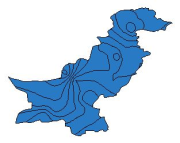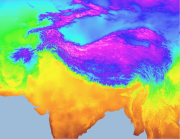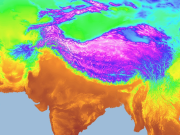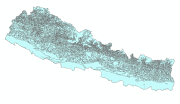Temperature
Type of resources
Topics
Keywords
Contact for the resource
Provided by
Representation types
Update frequencies
status
Scale
-

The HKH Region Climate data were derived from WorldClim(http://www.worldclim.org/), This map layer shows maximum temperature of warmest month for the period of 1950-2000.
-

The HKH Region Climate data were derived from WorldClim(http://www.worldclim.org/), This map layer shows mean temperature of wettest quarter for the period of 1950-2000.
-

The HKH Region Climate data were derived from WorldClim(http://www.worldclim.org/), This map layer shows mean temperature of coldest quarter for the period of 1950-2000.
-

The HKH Region Climate data were derived from WorldClim(http://www.worldclim.org/), This map layer shows annual temperature range for the period of 1950-2000.
-

The HKH Region Climate data were derived from WorldClim(http://www.worldclim.org/), This map layer shows mean temperature of driest quarter for the period of 1950-2000.
-

Digital polygon dataset of Annual Mean Minimum Temperature for Pakistan. The dataset is derived from Digital Chart of the world, DCW. The data layer is generated through interpolation of average monthly mimimum temperature data from weather stations on a 30 arc-second resolution grid.
-

The HKH Region Climate data were derived from WorldClim(http://www.worldclim.org/), This map layer shows minimum temperature of coolest month for the period of 1950-2000.
-

The HKH Region Climate data were derived from WorldClim(http://www.worldclim.org/), This map layer shows annual mean temperature for the period of 1950-2000.
-

Monthly maximum temperature for 12 months for Nepal where actual averages are used for calculation. Monthly maximum temperature data set consists of 12 raster files, one for each month, showing mean values derived from monthly temperature readings.
-

Digital grid dataset of monthly maximum temperature (April) for the period of 1950-2000 of Hindu Kush Himalayan (HKH) Region. The dataset is derived from WorldClim (http://www.worldclim.org/), and major climate databases compiled by the Global Historical Climatology Network (GHCN), the FAO, the WMO, the International Center for Tropical Agriculture (CIAT), R-HYdronet. Monthly maximum temperature data set consists of 12 raster files, one for each month, showing mean values derived from monthly temperature readings. The data layers were generated through interpolation of average monthly climate data from weather stations on a 30 arc-second resolution grid
 Metadata Catalogue
Metadata Catalogue